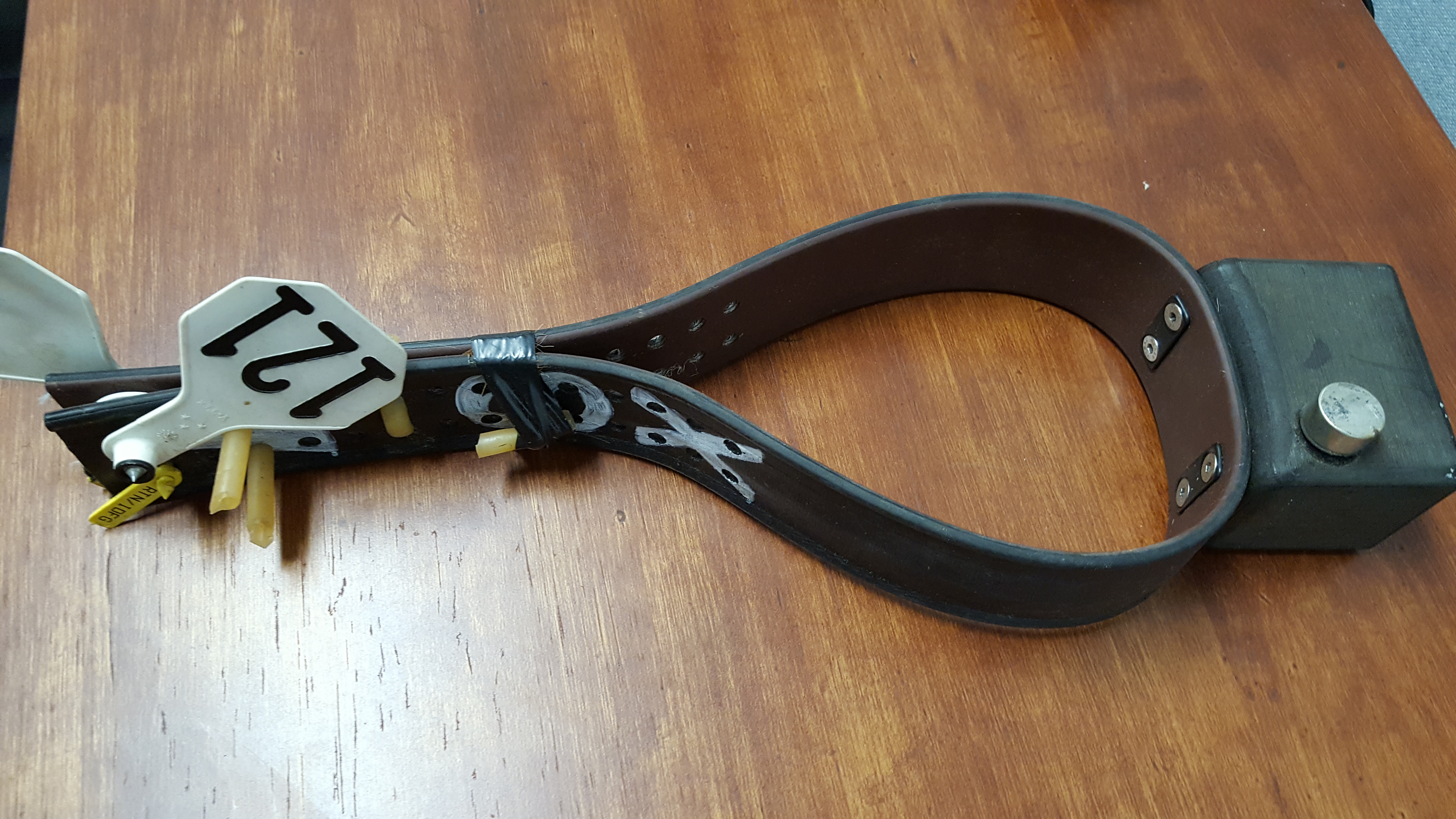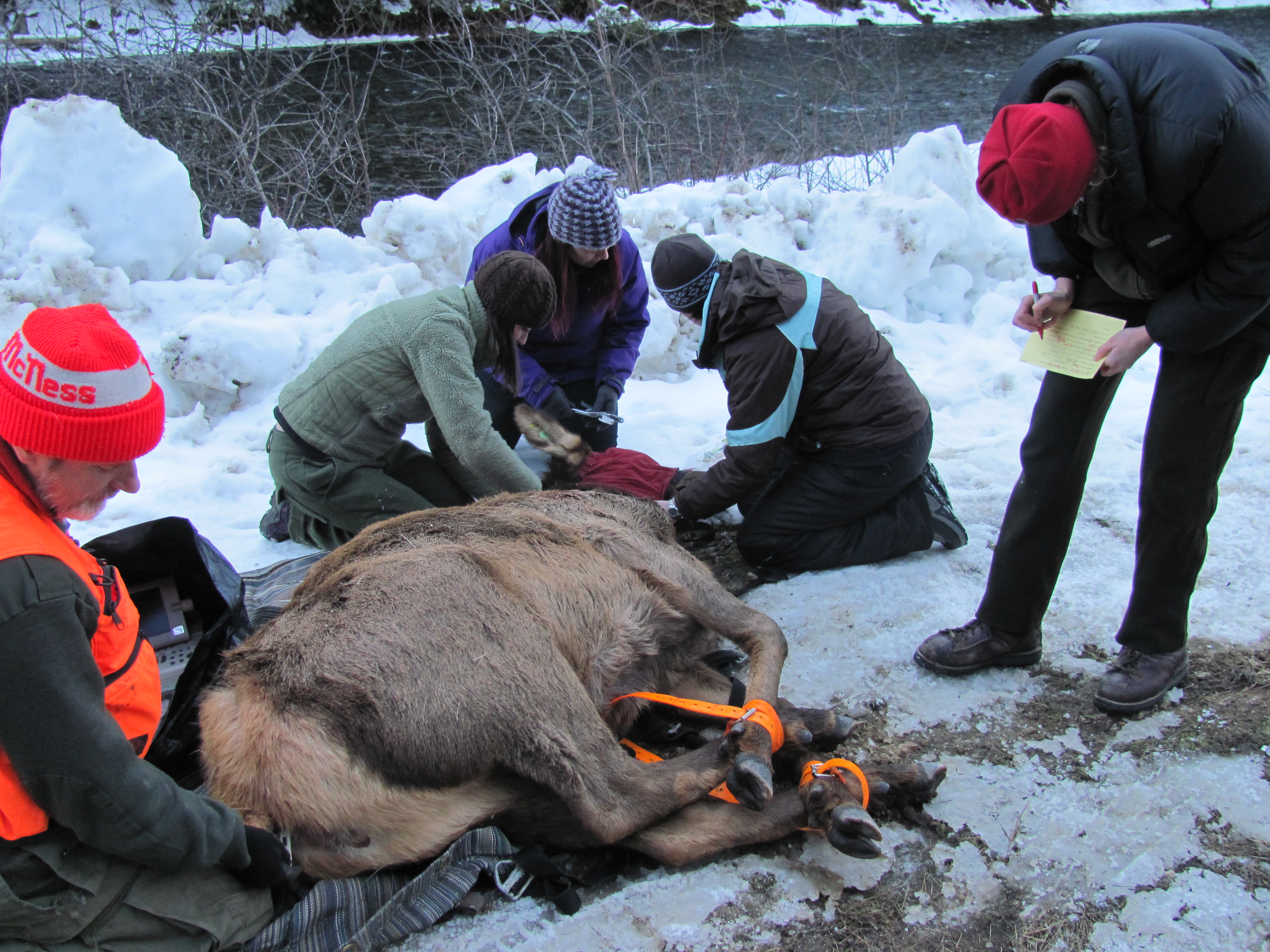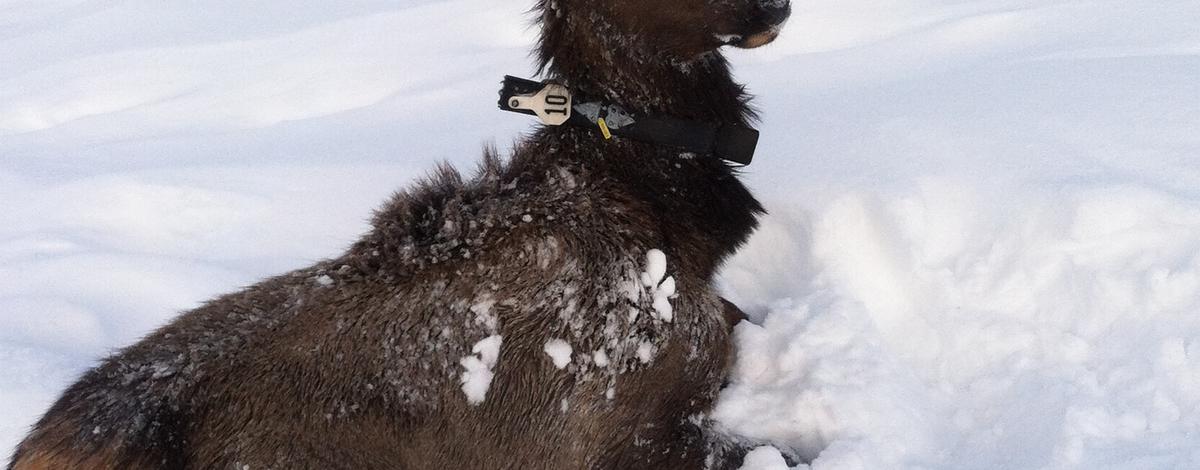For the past several years, Idaho Fish and Game has been working on a project to get to know our elk a bit better. Efforts and methods to monitor elk populations have always been a high priority for Fish and Game, but recently, new technology has given us an opportunity to walk a mile in our elk’s “shoes”…. ermm… I mean “hooves”, like we never have before.
The tools that give us this opportunity are VHF radio telemetry and GPS wildlife collars. VHF (very high frequency) telemetry collars have been around for quite some time and are still used today. These collars emit a signal at a specific frequency that allows us to get an approximate location and check to see if an animal is alive or dead.
In 2011 and 2013, a total of 39 elk were collared with VHF collars around Calder and Avery. While VHF collars can be useful for determining survival rates, it requires someone to be in close proximity on the ground, or in the air, to check on collared animals.
More recently, wildlife collars have improved drastically and now use GPS technology. This allows biologists to place a GPS collar on an animal, set it and forget it… well, kind of.
Since 2014, 83 cows and 113 calves have been captured and fitted with GPS collars in Game Management Units 3, 4, 6, 7 and 9. Bulls are not collared, and any male calves collared are fitted with a collar designed to expand and break off after about six months as the animal grows.

In order to efficiently capture and collar elk, helicopters must be used. This involves using tranquilizer darts, or nets, from the air. Those animals are processed on site or loaded into a sling below the helicopter and brought to a landing zone to be processed.

During processing, blood and fecal samples are taken to check for disease and/or pregnancy. Age is estimated by looking at the animal’s teeth and body condition is measured. After the animals have been measured and fitted with a GPS collar, the helicopter takes it back home.

After the animal is released, the GPS collars record and send exact locations of each animal on a daily basis. This gives us up-to-date and detailed information regarding habitat use and movement for up to four years. With this information, we can see how large of an area individuals use, what habitat is preferred during different times of the year and will hopefully understand important habitat where calving occurs.
Having a collar send us daily information also gives us detailed survival rates and the opportunity to accurately determine the cause of death for each animal. When a collar remains still for eight hours, it sends a mortality signal notifying us that the animal has not moved and may be dead. When we receive these signals, we respond as quickly as possible, usually within a day.
While sometimes we simply find a collar that has broken and fallen off a young male, often we find a kill site. Getting to the kill site within 24 hours allows us the valuable opportunity to see exactly what happened, and who, or what, the likely culprit was. Stay tuned for results from the mortality investigations soon.

